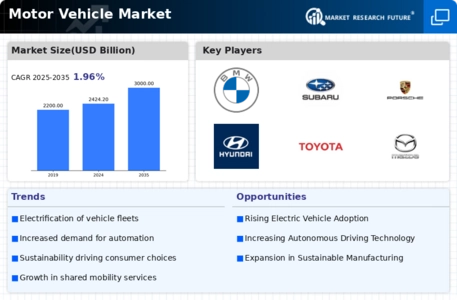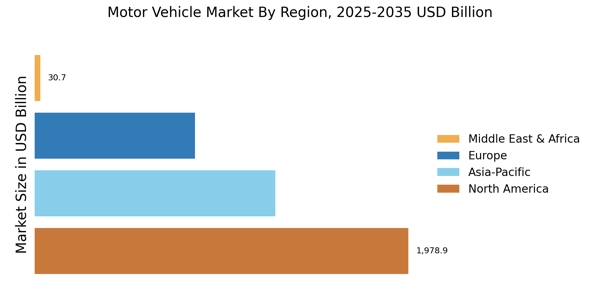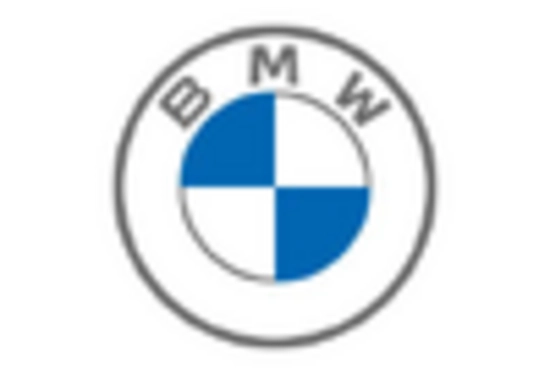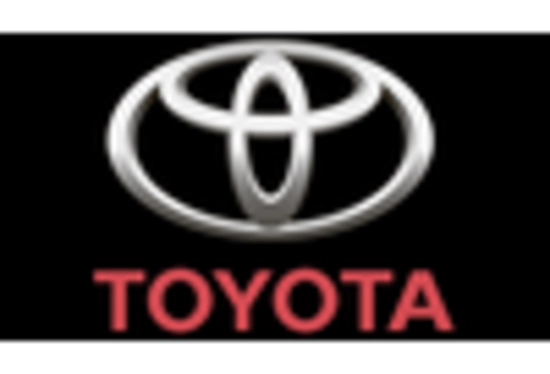Economic Factors
Economic factors are crucial drivers of the Motor Vehicle Market. Fluctuations in disposable income, fuel prices, and interest rates can significantly affect consumer purchasing behavior. In 2025, a projected increase in disposable income in emerging markets is likely to boost vehicle sales, as more consumers can afford to purchase new cars. Additionally, rising fuel prices may encourage a shift towards more fuel-efficient and electric vehicles, altering the competitive landscape. Understanding these economic indicators is essential for stakeholders in the Motor Vehicle Market to make informed decisions.
Regulatory Changes
Regulatory changes are a fundamental driver of the Motor Vehicle Market. Governments worldwide are enacting policies aimed at reducing carbon emissions and promoting alternative fuel vehicles. For example, incentives for electric vehicle purchases and penalties for high-emission vehicles are becoming more common. In 2025, it is anticipated that stricter regulations will lead to a 20% increase in electric vehicle adoption compared to previous years. These regulatory frameworks not only shape market dynamics but also compel manufacturers to innovate, ensuring compliance while meeting consumer demands within the Motor Vehicle Market.
Urbanization Trends
Urbanization trends significantly impact the Motor Vehicle Market. As more individuals migrate to urban areas, the demand for efficient and compact vehicles rises. This shift is evident in the increasing popularity of smaller cars and electric scooters, which cater to the needs of city dwellers. In 2025, urban areas are expected to house over 60% of the global population, further intensifying the need for innovative transportation solutions. Consequently, manufacturers are adapting their offerings to meet the unique challenges posed by urban environments, thereby influencing the dynamics of the Motor Vehicle Market.
Sustainability Initiatives
The Motor Vehicle Market is increasingly influenced by sustainability initiatives. Governments and organizations are implementing stricter emissions regulations, which compel manufacturers to innovate and produce cleaner vehicles. For instance, the introduction of low-emission zones in urban areas is prompting a shift towards electric and hybrid vehicles. In 2025, it is estimated that electric vehicles will account for approximately 30% of new car sales, reflecting a significant change in consumer preferences. This trend not only addresses environmental concerns but also aligns with the growing demand for sustainable practices within the Motor Vehicle Market.
Technological Advancements
Technological advancements play a pivotal role in shaping the Motor Vehicle Market. Innovations such as autonomous driving, advanced driver-assistance systems, and connectivity features are becoming standard in new vehicles. The integration of artificial intelligence and machine learning enhances safety and user experience, making vehicles more appealing to consumers. In 2025, the market for connected cars is projected to reach over 100 billion dollars, indicating a robust growth trajectory. These advancements not only improve vehicle performance but also redefine consumer expectations, thereby driving the Motor Vehicle Market forward.


















Leave a Comment